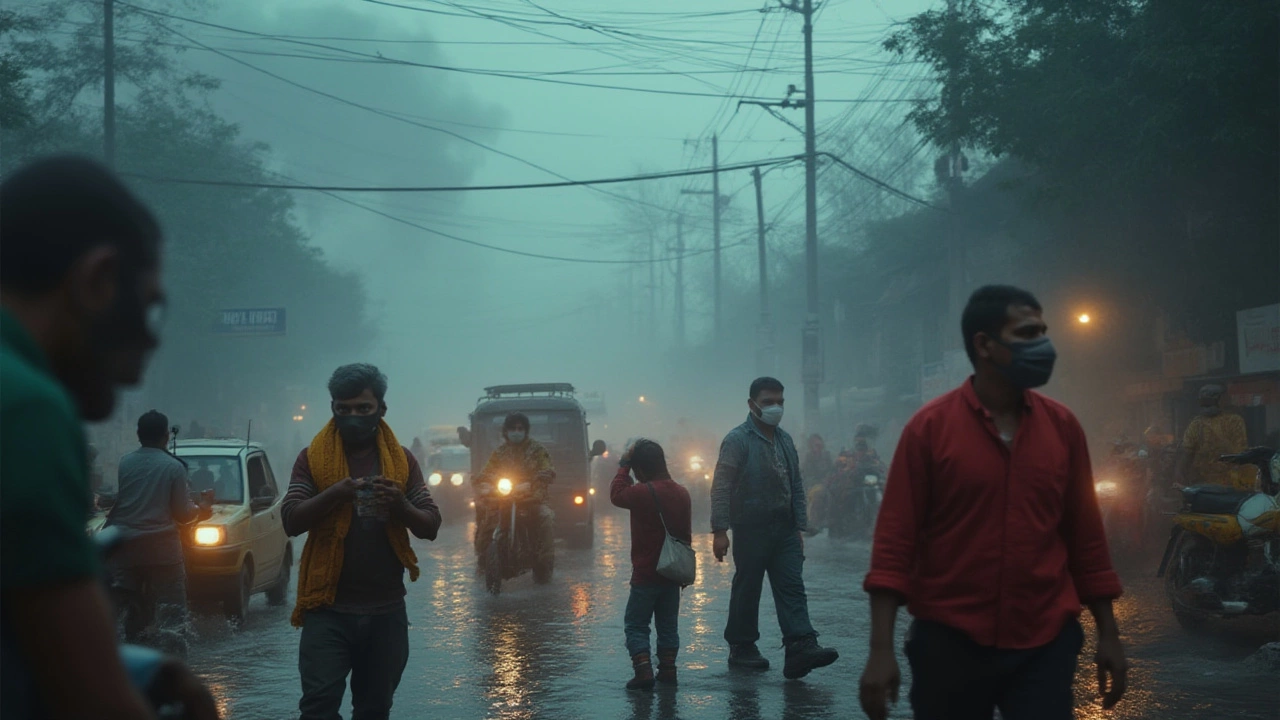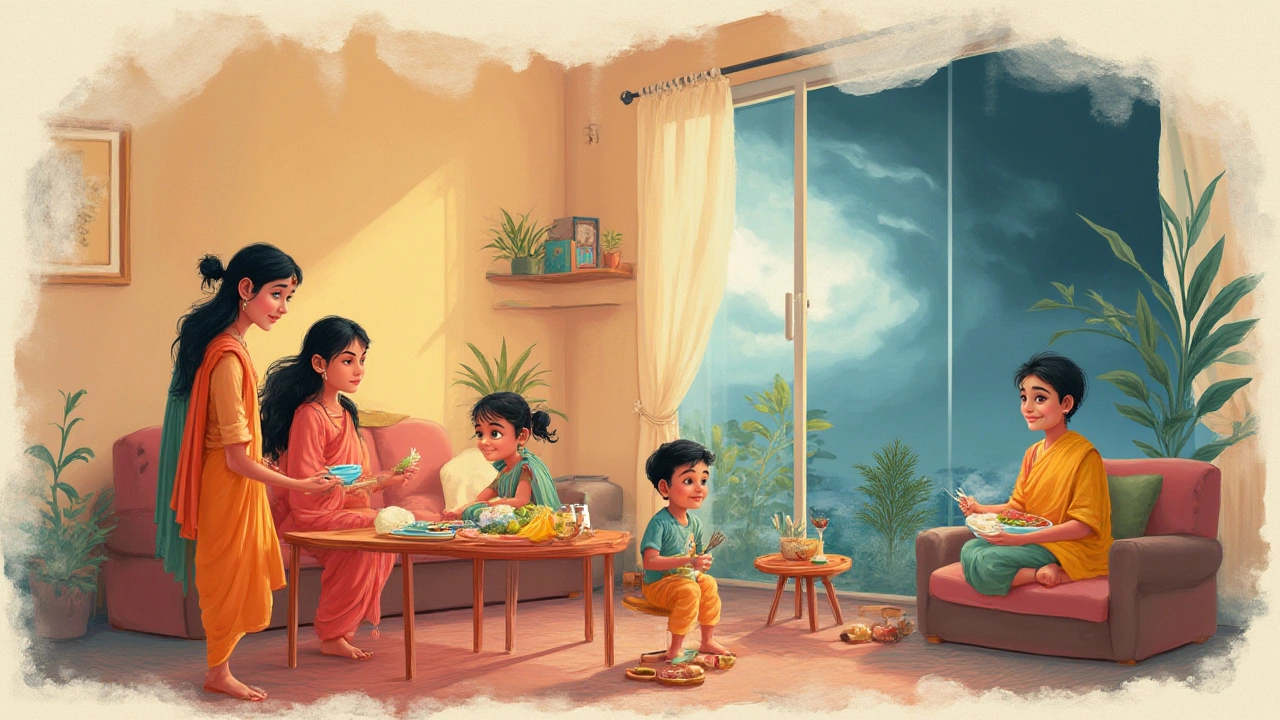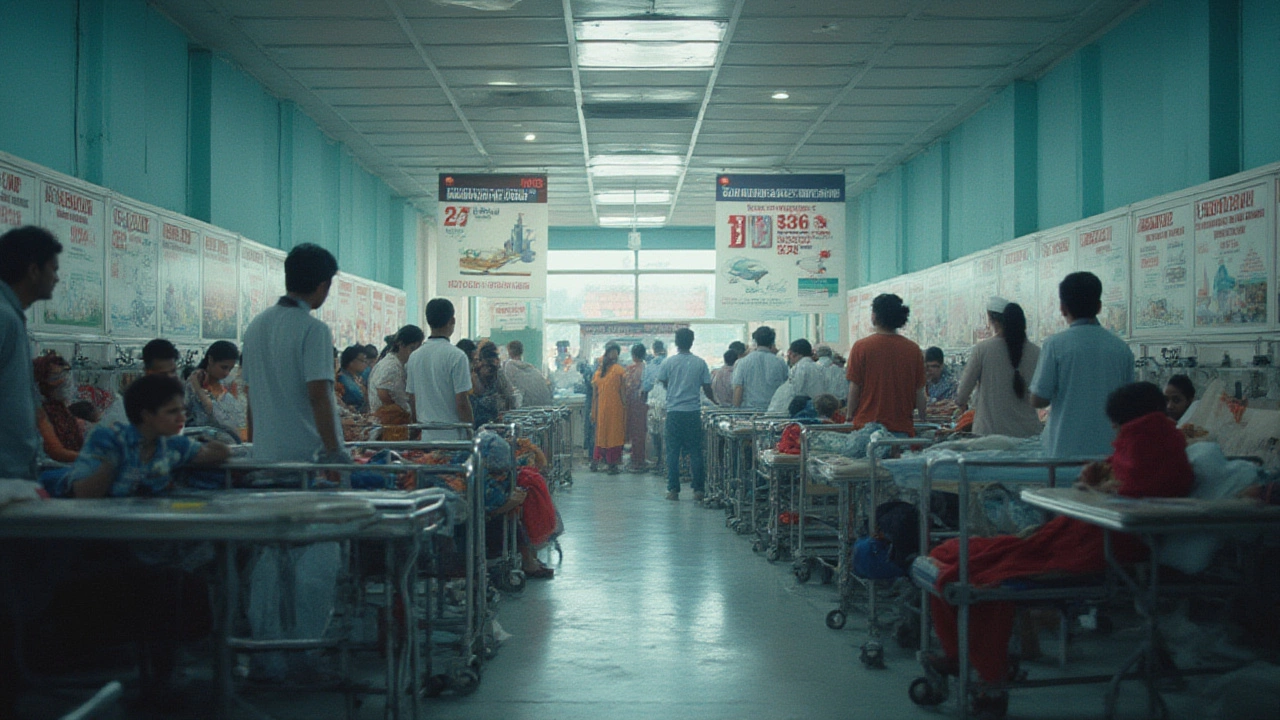
- Created by: Lydia Carmichael
- Completed on: 17 Jul 2025
- Categories: Health and Wellness
Each day we hear alarms about new dangers: viral outbreaks on the news, natural disasters trending online, or the quiet warning hum of climate change in the background. But what truly poses the biggest risk to us—something lurking in our daily lives, barely noticed until it's too late? Spoiler: It's not what most people think. Forget action-movie disasters. The silent, slow-burning threats claim more lives each year than dramatic accidents or rare epidemics.
Pandemics: The Invisible Killers
Let’s rewind to 2020. COVID-19 hit the world, halting economies and changing life as we knew it. Overnight, we learned how easy it was for a virus to leap continents and cripple entire communities. But pandemics aren’t just about one virus. In history, diseases like the Black Death, Spanish Flu, and HIV/AIDS have wiped out millions. The Black Death, for example, is estimated to have killed 75-200 million people in the 14th century. That’s nearly half of Europe’s population at the time. Spanish Flu in 1918-1919 infected a third of the world’s people and killed at least 50 million.
Fast forward—COVID-19 wasn’t the worst in terms of fatality rate, but it was a wakeup call. Even with advanced medicine, the death toll passed 7 million globally by 2025. Vaccines got us out, but not before huge loss. What made COVID-19 so dangerous? It was stealthy, transmitting before symptoms, and mutating fast. This is a pattern with many viral threats—think Ebola, MERS, SARS, and newer flu strains. Viruses and bacteria mutate. Antibiotic resistance is rising. The World Health Organization (WHO) warns that ‘Disease X’—a yet-unknown pathogen—could come any time, ready to start the next pandemic.
Why are these outbreaks so deadly? Global travel spreads pathogens faster than ever. Cities are packed, making transmission easy. Factory farms and deforestation push animals and humans closer, helping new microbes jump species. Superbugs, bacteria resistant to medicines, thrive thanks to overuse of antibiotics in medicine and farming. It’s a perfect storm for disease. The Centers for Disease Control and Prevention (CDC) has a scary stat: drug-resistant infections could cause 10 million deaths per year by 2050 if we don’t act.
- Keep vaccines up to date, including flu, COVID-19, and other region-specific shots.
- Wash hands often, especially before eating and after public transport.
- Practice safe food handling—cook meat well, wash raw produce, and avoid raw animal products where disease is common.
- If sick, stay home—don’t be the reason someone else gets ill.
Table: Historic Pandemic Death Toll
| Pandemic | Estimated Deaths | Time Frame |
|---|---|---|
| Black Death | 75-200 million | 1347-1351 |
| Spanish Flu | 50 million+ | 1918-1919 |
| HIV/AIDS | 40.4 million (to 2022) | 1981-now |
| COVID-19 | 7 million+ | 2019-2025 |
Lifestyle Diseases: The Silent Epidemic
Everyone worries about catching a rare disease, but here's a fact: the biggest killers are hiding in plain sight. Heart disease, stroke, diabetes, and cancer are called "lifestyle diseases" for a reason. They’re tied to what we eat, how we move—or don’t—and the habits we build. The World Health Organization found that noncommunicable diseases (NCDs) make up 74% of all deaths worldwide. That’s three out of every four people. Yet, they creep up slowly—no drama, no immediate threat, until someone’s life is changed overnight by a heart attack or diagnosis.
The top culprit? Cardiovascular disease, responsible for roughly 18 million deaths each year. That’s more than twice the combined deaths from all infectious diseases. Cancer comes next, with nearly 10 million deaths. Type 2 diabetes isn’t just about sugar—it can trigger heart, kidney, and nerve issues, cutting lives short. Obesity, often dismissed as "just weight," can have deadly effects on the heart and immune system.
Why so deadly? Processed food, lack of exercise, hours on screens, and chronic stress. Smoking and alcohol make things worse. It’s the little choices every day. Sometimes, genetics play a role. Family history matters. But most of the risk is in daily routines—grabbing soda over water, skipping walks for Netflix, or ignoring yearly check-ups.
- Eat more fruits, veggies, and whole grains—real food, less packaged stuff.
- Move! The WHO recommends at least 150 minutes of moderate exercise weekly. That’s just over 20 minutes a day.
- Don’t smoke, and if you drink, keep it moderate.
- See your doctor for regular blood pressure, sugar, and cholesterol checks—especially if these run in your family.
Check this table to see what’s really killing people today:
| Cause of Death | Annual Global Deaths (2024) |
|---|---|
| Cardiovascular Disease | 18 million |
| Cancer | 10 million |
| Chronic Respiratory Diseases | 4 million |
| Diabetes | 1.5 million |
| Infectious Diseases | 3 million |

Environmental Hazards: Breathing Danger
Health isn’t just about germs and genes—it’s also in the air, water, and soil. The planet’s health shapes ours. Air pollution is a huge killer, causing over 7 million premature deaths yearly, according to WHO data. That’s right there with cancer and ahead of car accidents worldwide. Dirty air triggers asthma, heart attacks, strokes, and lung cancers. In mega-cities like Delhi or Beijing, smog can literally erase years from people’s lives.
Then there’s water pollution. Unclean water means diseases like cholera, dysentery, and typhoid. Nearly 1.2 billion people still drink unsafe water, WHO reports. In low-income places, kids die from diarrhea at shocking rates. Soil pollution brings heavy metals and pesticides straight to dinner plates. Add climate change—heatwaves, wildfires, storms—and suddenly "the environment" isn’t a feel-good concept; it’s a life-or-death deal.
Climate extremes are smashing records: the 2024 heatwave in Europe killed more than 55,000 people, topping previous years. Wildfires in Canada, Australia, and the Mediterranean are becoming normal. Extreme events kill directly, but also make food and water unsafe and stress health systems.
- Check your local air and water reports online—adjust outdoor activities when pollution spikes.
- Use water filters for drinking, and never ignore "boil-water" notices.
- Support cleaner energy sources—solar, wind, public transport—whenever possible.
- Grow plants indoors. They help clean the air a bit (spider plant and snake plant are easy picks).
Table: Environmental Health Risks
| Hazard | Annual Deaths |
|---|---|
| Air Pollution | 7 million+ |
| Water Pollution | 829,000 due to diarrhea (children alone) |
| Climate-related Disasters | Est. 100,000 (varies by year) |
Accidents and Violence: The Sudden Threats
Not all dangers sneak up on us. Some strike out of nowhere. Road accidents claim over 1.3 million lives every year, says the WHO—almost 3,700 people a day. Car and motorcycle crashes are the leading causes of death for people ages 5-29 worldwide, which is eye-opening if you think about how many of us drive daily. But it’s not just on roads—falls (especially in older adults), injuries at work, house fires, and drownings take hundreds of thousands more lives each year.
Then there’s violence. Homicides and suicide rates are serious worries in many regions. In 2023, 700,000 people died by suicide globally and over 400,000 were victims of homicide. Domestic violence, even though under-reported, leads to both deaths and chronic health issues, often ignored in the stats.
Many of these deaths are preventable. Seatbelts and helmets, safe roads, padding in playgrounds, and sensible laws save lives. Mental health awareness can help prevent suicide, and stricter gun laws have shown drops in homicide rates in places like Australia after reforms. Simple home changes—rails in bathrooms for elders, fire alarms, swimming lessons—can go a long way in reducing risks.
- Always use seatbelts and helmets, even for short trips.
- Secure homes for elderly relatives: install bathroom rails, remove trip hazards, add nightlights.
- Support local mental health initiatives and check in with friends and family often.
- Store dangerous items (medicine, chemicals, firearms) locked and out of children’s reach.
Table: Accidents and Violence Deaths
| Cause | Annual Deaths (2024) |
|---|---|
| Road Traffic Accidents | 1.3 million |
| Homicide | 400,000 |
| Suicide | 700,000 |
| Drowning | 236,000 |
| Falls | 684,000 |

What’s the Deadliest Threat? Putting It All Together
So, what’s the ultimate threat to humans? There’s no single villain. Deadliest threats to humans aren’t what most movies show. It’s not just a sudden outbreak or freak accident—it’s the constant, invisible pressures. The numbers point to lifestyle diseases as the top killer—heart disease and cancer together claim more lives than all wars and pandemics combined. But infections and pandemics remind us that nature is unpredictable. Environmental hazards aren’t some far-off worry—they’re taking years off life already, especially for those living in polluted areas or facing extremes of climate.
Then there are the sudden tragedies—crashes, violence, missteps that change lives in an instant. All these threats share one thing: most are preventable or manageable. Experts say changing day-to-day routines, smarter cities, cleaner environments, and better public health make a huge difference. The biggest enemy? Sometimes, it’s our own indifference or resistance to change.
Want to lower your risk? Simple steps carry real weight. Eat more plants, move more, keep up with shots, know your local air and water quality, always buckle up, and fight for safer communities. Talk openly about mental health. Advocate for clean air and water. Each person’s habits matter, but so do group efforts—community programs, local policies, cleaner industries. It’s a team sport, and the prize is a longer, healthier life for everyone.
Here’s the twist: the deadliest threat isn’t out there somewhere. It’s the combination of everyday choices, global trends, and how society deals with warnings. We can’t predict every danger, but we can stack the odds in our favor—one real, conscious action at a time.